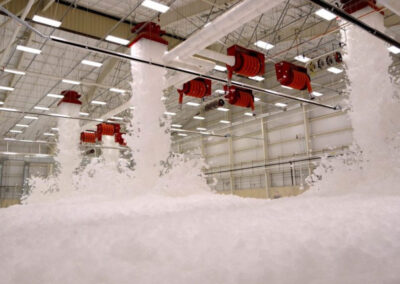Fire protection for plastic commodities presents a challenge for building occupants/owners and fire protection professionals alike. Generally speaking, plastics burn hotter, faster, release more smoke and toxic gases and require more water to put out. Complicating matters is the manner in which plastics are stored. High-piled configurations or enclosed containers present a range of variable fire protection scenarios. Additionally, some building occupants may store commodities made of different types of plastics creating a range of combustibility situations.
Under NFPA 13, a plastic commodity is defined by having more than 15% by weight or 25% by volume of plastic and can be classified as Group A, B or C. Foam plastics (expanded plastics) are typically classified in NFPA 13 as Group A plastics.
Expanded polystyrene and similar materials categorized as Group A plastics can present difficult fire scenarios due to the higher heat release rates. Storage areas, which incorporate large volumes of products, can present particularly challenging fire scenarios. As a result, it is essential that properly designed and installed sprinkler systems are sized for the worst case scenario. However, with appropriate limits of pile size and pile height many sprinkler designs accommodate the storage of Group A plastics. Each case has to be individually assessed to determine what the correct sprinkler system is for any given storage scenario.
Our fire protection professionals are highly trained and are experienced in assessing the needs for plastic storage occupancies, including wet, dry, pre-action, in-rack and ESFR (early suppression fast response). With this combination of training and experience, they can provide the recommendations that best suit your needs.

